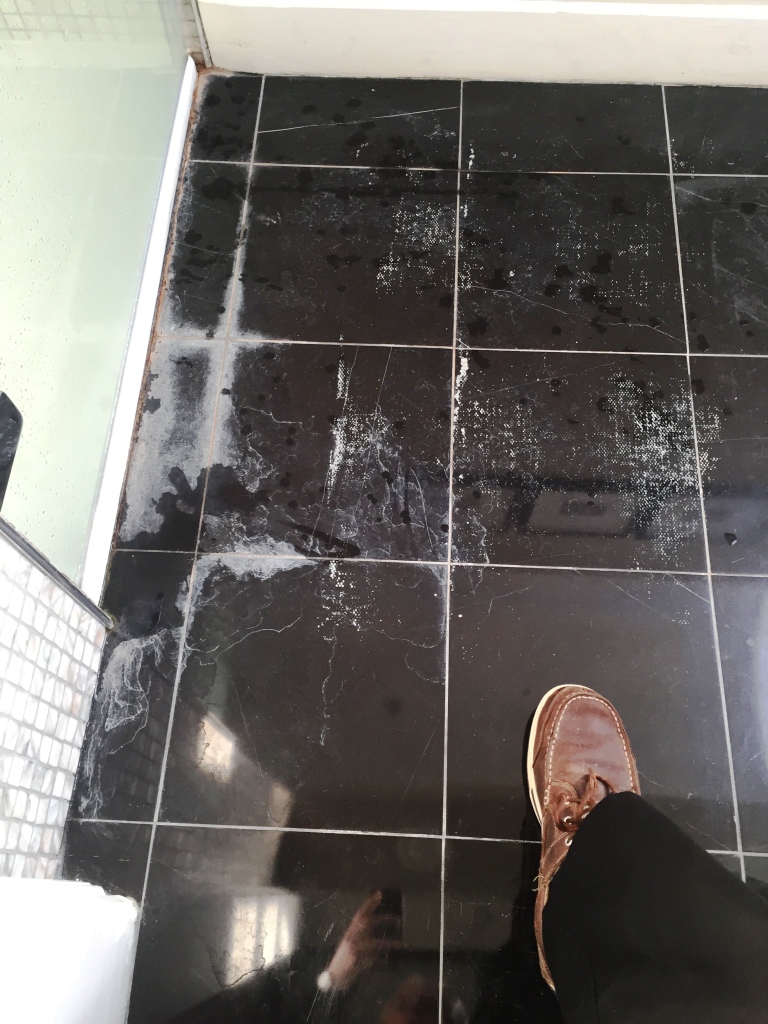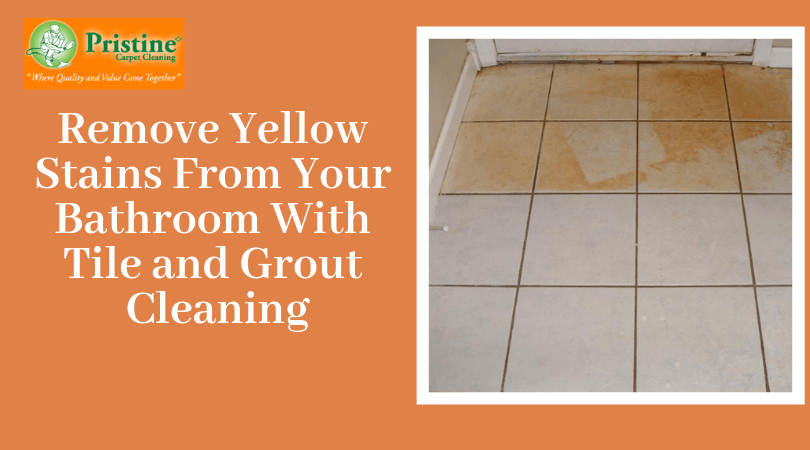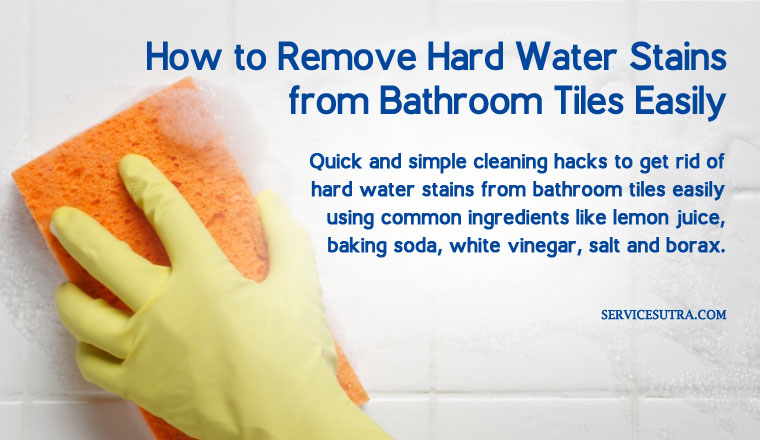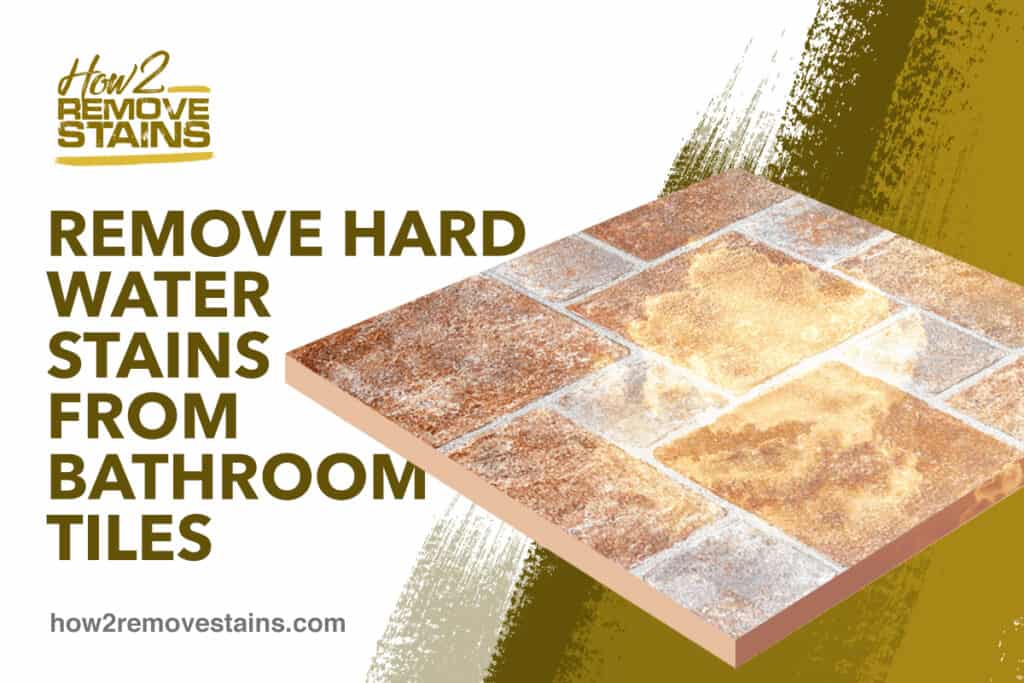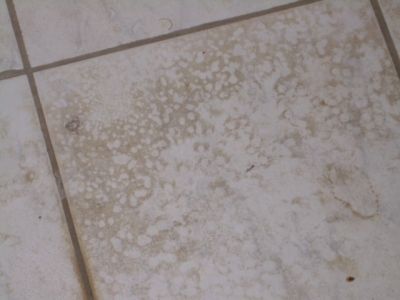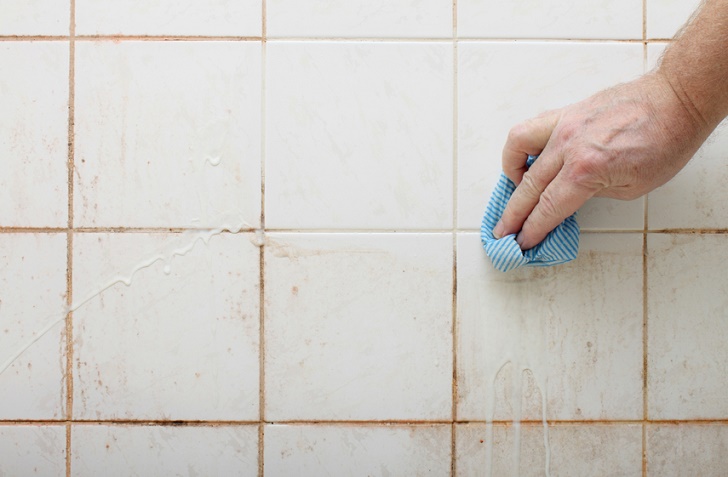Understanding the Types of Bathroom Tile Stains
Bathroom tile stains can be a common and frustrating issue for many homeowners. Understanding the different types of stains that can affect bathroom tiles is crucial in determining the most effective removal methods. Below are the various types of bathroom tile stains, their causes, and how to identify them, empowering you to tackle the stains with the appropriate cleaning solutions.
- Hard Water Stains: One of the most prevalent types of bathroom tile stains is hard water stains, caused by the mineral deposits in tap water. These stains appear as white, chalky residue on the tiles and are often found around faucets, showerheads, and areas that come into contact with water. Identifying hard water stains is essential for selecting the right cleaning agents to dissolve and remove the mineral buildup effectively.
- Soap Scum: Soap scum is another common type of stain that accumulates on bathroom tiles, particularly in shower and bath areas. It is the result of soap residue mixing with minerals in the water and can create a grimy, cloudy film on the tiles. Recognizing soap scum stains is crucial for choosing cleaning solutions that can break down the buildup and restore the tiles’ original shine.
- Mold and Mildew: Mold and mildew thrive in damp, humid environments such as bathrooms, causing black, green, or brown discoloration on tiles and grout. These stains not only detract from the appearance of the tiles but also pose health risks. Identifying mold and mildew stains is vital for implementing proper cleaning and preventive measures to eradicate and inhibit their growth.
- Rust Stains: Rust stains can occur on bathroom tiles due to metal fixtures, such as shaving razors, cans, or pipes, that come into contact with the tiles. These stains appear as reddish-brown marks and can be challenging to remove. Recognizing rust stains is key to using appropriate cleaning agents and techniques that can safely eliminate the discoloration without damaging the tiles.
- Grout Stains: Stains can also affect the grout between bathroom tiles, caused by mold, mildew, dirt, and spills. Grout stains can appear as discolored, dark lines between the tiles, diminishing the overall appearance of the tiled surface. Understanding grout stains is essential for selecting cleaning methods that can effectively restore the grout to its original color and cleanliness.
Natural Remedies for Removing Stains on Bathroom Tiles
Natural remedies offer effective and environmentally friendly solutions for removing stains on bathroom tiles. From common household ingredients to natural cleaning agents, these remedies can effectively tackle various types of stains without the use of harsh chemicals. Below are several natural remedies for removing stains on bathroom tiles, providing you with safe and eco-friendly alternatives for maintaining a clean and pristine tiled surface.
Vinegar and Baking Soda: A combination of vinegar and baking soda forms a powerful natural cleaning solution for tackling a variety of stains on bathroom tiles. Mix equal parts of vinegar and water in a spray bottle and spray the affected areas. Then, sprinkle baking soda over the sprayed surface and allow it to fizz and bubble. Use a soft brush or sponge to scrub the tiles gently, focusing on the stained areas. Rinse the tiles with water and pat them dry to reveal a cleaner and refreshed surface.
Lemon Juice: Lemon juice’s natural acidity makes it an effective stain remover for bathroom tiles. Squeeze fresh lemon juice onto the stained areas and allow it to sit for a few minutes to penetrate the stains. Use a soft brush or sponge to gently scrub the tiles, leveraging the acidic properties of the lemon juice to dissolve and lift the stains. Rinse the tiles thoroughly with water to remove any residue and enjoy the fresh, citrusy scent left behind.
Hydrogen Peroxide: Hydrogen peroxide is a mild and non-toxic bleaching agent that can effectively combat tough stains, including mold, mildew, and grout discoloration. Apply hydrogen peroxide directly to the stained areas and allow it to sit for some time, depending on the severity of the stains. Use a brush or sponge to scrub the tiles and grout gently, then rinse the surface with water. The whitening and disinfecting properties of hydrogen peroxide can help restore the tiles to their original cleanliness.
Salt and Water Paste: A simple paste made from salt and water can serve as a natural abrasive cleaner for removing stains on bathroom tiles. Mix salt and water to form a thick paste and apply it to the stained areas. Use a soft brush or sponge to scrub the paste onto the tiles, focusing on the affected areas. The abrasive nature of salt can help lift and exfoliate stubborn stains, while the natural properties of salt aid in disinfection and deodorization. Rinse the tiles thoroughly to reveal the refreshed surface.
Tea Tree Oil: Tea tree oil is renowned for its natural antifungal and antibacterial properties, making it an effective remedy for combating mold, mildew, and other organic stains on bathroom tiles. Dilute tea tree oil with water in a spray bottle and spritz the affected areas. Allow the solution to sit for a while to penetrate the stains, then use a brush or sponge to gently scrub the tiles. The natural properties of tea tree oil will not only remove the stains but also inhibit the growth of mold and mildew, keeping the tiles cleaner for longer.
Essential Oil Infused Vinegar: Infusing vinegar with essential oils, such as lavender, eucalyptus, or peppermint, can create a natural and pleasantly scented cleaning solution for removing stains on bathroom tiles. Fill a jar with vinegar and add a few drops of your preferred essential oil. Seal the jar and let it sit for a few days to allow the vinegar to absorb the aromatic properties of the essential oil. Transfer the infused vinegar to a spray bottle and use it as a natural cleaning solution for tackling various stains on the tiles. The combination of vinegar and essential oils offers both cleaning and deodorizing benefits, leaving the bathroom tiles refreshed and fragrant.
Chemical Cleaners: Pros and Cons
Chemical cleaners are commonly used for removing stubborn stains on bathroom tiles, offering powerful and efficient solutions for addressing various types of stains. However, it is essential to consider the pros and cons of using chemical cleaners to make an informed decision about their suitability for your specific cleaning needs. Let’s examine the advantages and disadvantages of chemical cleaners for removing stains on bathroom tiles, providing valuable insights into their efficacy and potential drawbacks.
Pros:
Powerful Stain Removal: Chemical cleaners are formulated with potent ingredients designed to break down and dissolve tough stains, including soap scum, hard water deposits, mold, mildew, and grout discoloration. Their powerful cleaning agents can effectively tackle stubborn stains that may be resistant to natural remedies, providing thorough and efficient stain removal.
Time-Saving: Chemical cleaners often offer quick and immediate results, making them a time-saving option for individuals with busy schedules or limited time for cleaning. With minimal effort, chemical cleaners can swiftly remove stains from bathroom tiles, allowing for a more expedient cleaning process compared to natural remedies.
Targeted Formulations: Many chemical cleaners are specifically formulated to target and address specific types of stains commonly found in bathrooms. Whether it’s a specialized mold and mildew remover, a hard water stain remover, or a soap scum cleaner, these targeted formulations can provide tailored solutions for different types of bathroom tile stains, ensuring effective and precise stain removal.
Sanitizing and Disinfecting Properties: Certain chemical cleaners offer sanitizing and disinfecting properties that can help eliminate harmful bacteria, germs, and pathogens present on bathroom tiles. These cleaners not only remove stains but also contribute to maintaining a hygienic and sanitized environment in the bathroom, promoting health and cleanliness.
Cons:
Harsh Chemical Ingredients: Many chemical cleaners contain harsh and abrasive chemical ingredients, such as bleach, ammonia, and other strong acids, which can pose health risks and cause damage to the tiles, grout, and surrounding surfaces. Prolonged exposure to these chemicals can lead to skin and respiratory irritation, making them potentially hazardous to use without proper precautions.
Environmental Impact: The use of chemical cleaners can contribute to environmental pollution due to the release of harmful substances into water systems and the atmosphere. Harsh chemicals in these cleaners may have long-term adverse effects on the environment, making them less environmentally friendly compared to natural cleaning remedies.
Potential Damage to Surfaces: Certain chemical cleaners, especially those containing abrasive agents, can cause damage to bathroom tiles, grout, and other surfaces. Overuse or improper application of these cleaners may result in discoloration, etching, or deterioration of the tiles, compromising their appearance and structural integrity.
Fumes and Odors: Chemical cleaners often emit strong fumes and odors that can be unpleasant and potentially harmful when inhaled. These fumes may linger in the bathroom and surrounding areas, affecting indoor air quality and posing respiratory risks, especially in poorly ventilated spaces.
Preventing Future Stains on Bathroom Tiles
Preventing future stains on bathroom tiles is essential for maintaining a clean and pristine tiled surface over time. By implementing proactive measures and regular maintenance, you can minimize the occurrence of stains and preserve the aesthetic appeal of your bathroom tiles. Here are several effective strategies for preventing future stains on bathroom tiles, empowering you to maintain a beautiful and hygienic tiled environment.
Regular Cleaning and Maintenance: Establishing a routine for regular cleaning and maintenance is crucial for preventing the buildup of stains on bathroom tiles. Regularly dusting, sweeping, and mopping the tiled surfaces, along with periodic deep cleaning, can help prevent the accumulation of dirt, grime, and other substances that contribute to stains.
Sealing Grout Lines: Applying a high-quality grout sealer to the grout lines between the tiles can provide a protective barrier against moisture, dirt, and stains. Sealing the grout helps inhibit the absorption of liquids and contaminants, reducing the likelihood of discoloration and mold growth, and making it easier to clean and maintain.
Proper Ventilation: Ensuring adequate ventilation in the bathroom is essential for preventing moisture-related stains, such as mold and mildew, on the tiles. Proper ventilation, including the use of exhaust fans and opening windows when possible, helps reduce humidity levels, allowing the tiled surfaces to remain dry and resistant to staining.
Wipe and Dry Surfaces: Promptly wiping down and drying the bathroom tiles after each use can help prevent water spots, soap scum, and other residues from accumulating and creating stains. Using a squeegee or microfiber cloth to remove excess moisture from the tiles, especially in shower and bath areas, can significantly reduce the potential for stains.
Use Mild Cleaning Agents: When cleaning bathroom tiles, opt for mild, non-abrasive cleaning agents that are specifically formulated for tile surfaces. Harsh chemicals can strip away sealants and damage the tiles, making them more susceptible to stains. Using gentle cleaning solutions helps preserve the integrity of the tiles while effectively removing dirt and residues.
Address Leaks and Water Damage: Promptly addressing any leaks or water damage in the bathroom, such as from faucets, pipes, or fixtures, is essential for preventing stains and deterioration of the tiles. Repairing leaks and addressing water damage helps maintain the integrity of the tiled surfaces and prevents the development of water-related stains.
Use Coasters and Mats: Placing coasters under toiletry items and using bath mats or rugs in strategic areas can help protect the tiles from potential stains caused by spills, splashes, and contact with personal care products. Coasters and mats create a barrier between the tiled surface and potentially staining substances, minimizing the risk of discoloration.
Regular Inspections: Conducting regular inspections of the bathroom tiles and grout lines allows for early detection of any signs of stains, discoloration, or damage. Identifying and addressing issues promptly can prevent stains from worsening and facilitate timely corrective actions to maintain the cleanliness and appearance of the tiles.
Professional Tile Cleaning Services: When to Consider Them
While regular cleaning and maintenance can effectively address many stains on bathroom tiles, there are instances when professional tile cleaning services may be the most suitable solution. Professional cleaners have the expertise, equipment, and specialized techniques to tackle stubborn stains and restore the pristine condition of bathroom tiles. We will identify the circumstances in which it is appropriate to consider professional tile cleaning services, providing valuable insights into when professional intervention may be necessary for achieving optimal results.
Stubborn or Embedded Stains: When bathroom tiles are plagued by stubborn or deeply embedded stains that resist conventional cleaning methods, professional tile cleaning services can provide the specialized treatments and techniques needed to effectively remove the persistent discoloration. Professional cleaners have access to advanced cleaning agents, tools, and methods that can address tough stains without compromising the integrity of the tiles.
Extensive Grout Discoloration: Grout discoloration, especially in hard-to-reach areas or large expanses of tiled surfaces, may require professional attention to ensure thorough and uniform cleaning. Professional tile cleaning services can employ grout-specific cleaning solutions, steam cleaning, and other targeted methods to restore the color and cleanliness of the grout, enhancing the overall appearance of the tiled space.
Time and Labor Constraints: For individuals with time constraints or those seeking to minimize the physical effort involved in tile cleaning, professional services offer a convenient and efficient solution. Professional cleaners can handle the entire cleaning process, from pre-treatment to rinsing and drying, saving homeowners valuable time and effort while ensuring exceptional results.
Specialized Equipment and Techniques: Professional tile cleaning services utilize specialized equipment, such as high-pressure steam cleaners, rotary scrubbers, and extraction systems, to achieve deep cleaning and stain removal. These advanced tools and techniques can address stains, mold, and grime more effectively than conventional cleaning methods, delivering superior outcomes.
Restoration and Sealing: In cases where bathroom tiles require restoration, resealing, or grout repair, professional tile cleaning services can provide comprehensive solutions to rejuvenate and protect the tiled surfaces. Professional cleaners can perform resealing of grout lines, repair damaged tiles, and implement protective treatments to prolong the cleanliness and durability of the tiles.
Post-Construction or Renovation Cleaning: After a construction or renovation project in the bathroom, professional tile cleaning services can help remove construction residues, grout haze, and stubborn debris that may have accumulated on the tiles. Professional cleaners have the expertise to perform post-construction cleaning, ensuring that the newly installed or renovated tiles are free from stains and blemishes.
Specialized Stain Removal Expertise: For specific types of stains, such as hard water deposits, efflorescence, or mineral buildup, professional tile cleaning services can offer specialized expertise and treatments tailored to the unique characteristics of each stain. Their in-depth knowledge and experience allow them to identify and address different types of stains effectively.
Remove Hard Water Stains from Tile and Grout
How to Remove Yellow Stains From Bathroom Tiles?
Removing Hard Water Stains from Tiles (4 Effective Methods)
How to remove stains on bathroom tiles quickly u2013 DripMotion
How To Clean Dirty White Tiles to make Pure White Tiles At Home
How to Remove Hard Water Stains from Bathroom Tiles [ Detailed
How To Remove Stains From Bathroom Tiles?
Most Powerful Ways To Clean Tiles & Grout Naturally
How to remove hard water stains in bathroom tiles
Related Posts:
